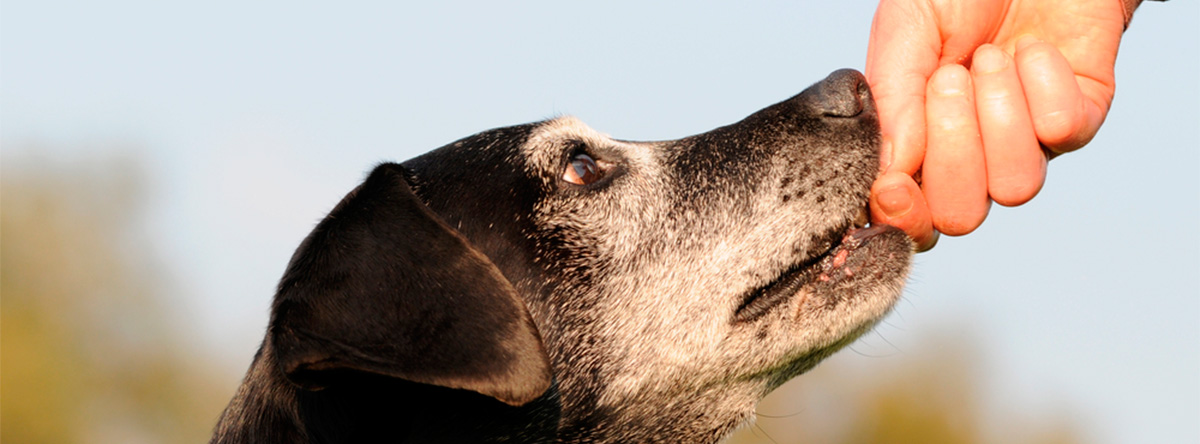Cereal Vs Meat: The Great Dog Food Debate
16/09/2014
The debate continues to surround the controversial topic of what constitutes the best diet for dogs. Responsible dog owners just want to feed their dogs a nutritionally-balanced, good quality diet that will prolong and enrich their dogs’ lives, but it transpires that guidance can be confusing at best and conflicting at worst.
 There are dog owners who swear that wet dog food is more easily digested and more palatable than dry dog food, whilst dry dog food aficionados will happily point out that kibble has a longer shelf life, is better for dogs teeth, will contain little to no simple sugars and is more economical as the formulas are packed with nutrients rather than water. There are proponents of the raw, natural dog food diet, where dogs are fed a homemade diet containing up to 80% raw meat, offal, meat bones and sometimes even whole dead prey such as rabbits to mimic the natural, carnivorous diets that dogs would have had from scavenging in the wild. Critics of the diet say there are risks of dental fractures and intestinal damage from poorly chewed bones, bacterial and parasitic contamination which can also be passed to their owners as well as it being difficult to ensure a good nutrient and vitamin balance on a daily basis.
There are dog owners who swear that wet dog food is more easily digested and more palatable than dry dog food, whilst dry dog food aficionados will happily point out that kibble has a longer shelf life, is better for dogs teeth, will contain little to no simple sugars and is more economical as the formulas are packed with nutrients rather than water. There are proponents of the raw, natural dog food diet, where dogs are fed a homemade diet containing up to 80% raw meat, offal, meat bones and sometimes even whole dead prey such as rabbits to mimic the natural, carnivorous diets that dogs would have had from scavenging in the wild. Critics of the diet say there are risks of dental fractures and intestinal damage from poorly chewed bones, bacterial and parasitic contamination which can also be passed to their owners as well as it being difficult to ensure a good nutrient and vitamin balance on a daily basis.
There are also many discussions surrounding whether dog foods should be cereal-based or meat-based. Those who favour a meat-based diet, either cooked or raw are basing their argument on the fact that dogs evolved in the wild hunting prey in packs where they would have eaten a diet that was largely meat based. They believe that dogs’ digestive systems are therefore designed to cope with large amounts of protein, but do not contain the enzymes necessary to break down cereal carbohydrates, which they wouldn’t naturally choose to eat in the wild. Dog owners and vets who recommend cereal-based dog food are quick to point out that, as long as the cereals in dog foods are good quality and have been properly prepared, they actually provide essential carbohydrate energy for dogs, which is particularly useful for active, working dogs. After all, the diet of many animals, including humans has evolved considerably over time. In addition, if this was really true that dogs couldn’t digest carbohydrates, they would all be diabetic when fed a normal diet, which obviously isn’t the case.
But for a new dog owner, concerned about what their dog should eat, the nutritional panel on the dog food bag or tin is the first place to start looking. Here, all the ingredients will be listed in descending order by weight, so it is easy to compare across several dog foods to find the most suitable food for your dog. If comparing wet to dry food, it is important to remember that the levels on the bag or tin are not likely to be on a dry matter basis, so when you take moisture levels into account the nutrient levels and meat levels can change drastically. Typically a dry dog food will contain 10-11% moisture, tinned dog food will be between 75-85% and raw meat or chicken will contain 72-75% moisture.
Carbohydrate will always be present in dry dog food as this nutrient stretches during the extrusion process to form a crispy shell to the biscuit. Whether this is from a common grain (wheat, corn), a hypoallergenic cereal (oats or rice), or more exotic source (amaranth, sweet potato or tapioca), this will provide energy, satiety and fibre to the diet. As sensitivities and allergies in dogs are becoming more and more prevalent, some of these cereals are best avoided if you suspect your dog might be suffering from poor digestion or itchy skin or ears. There can be a lot of other causes however, as these are quite generic symptoms, so getting some veterinary advice before changing diets can be a good idea.
Choosing a good branded food will also ensure that the quality of the diet doesn’t alter over time. It may be slightly more expensive than a plain bagged food or supermarket own label, but dog food manufacturers have their reputations to protect, and will often have fixed formulas and better research and development facilities in comparison.
As with many debates about dog food, the conclusion usually comes down to one thing: quality. Dog owners should feed their dog the best quality dog food they can find and afford. This may not be the most expensive brand. It may not be the brand that labels its packaging as ‘premium’ or ‘superior’. It is up to the dog owners themselves to carry out a little research and also a little trial and error of different foods to discover which dog food is the right one for their dog. It may differ from other dogs they own and it may differ from a recommendation of someone with the same breed dog, but if they have chosen a suitably nutritionally-balanced dog food and their dog gets on well with it, then it is the right choice for them.
All Gilbertson and Page diets are tried and tested formulas, as we have years of experience in keeping dogs healthy, fit and in condition, so we understand all the concerns dog owners have today. We have have our own highly-qualified team, a nutrition development lab and, most importantly, constant feedback from professionals whose rely on their dogs’ health. That’s why there’s clear labelling on all our bags to highlight the levels of meat, fish and cereals as well as the percentage of protein and fat and a more detailed breakdown on the back showing all the different vitamins and minerals levels that make up their nutritionally-balanced dog foods. Even greater detail can be found on the website at gilpa.co.uk.
Here are three key points to remember when choosing a dog food:
- Read the ingredients/composition list carefully. Compare amounts and types of cereal, meat, vitamins, minerals and other supplements. Look for good quality wholegrain cereals. Better quality meat sources include naturally preserved chicken, white fish and lamb.
- Consult your dog breeder, breed club or vet to discover if there are particular supplements, proteins and cereals that are beneficial to your breed of dog that you should look out for on the bag, for example yucca extract, green lipped mussel extract, linseed and manganese to keep joints and ligaments healthy in particularly active or working dogs.
- Replace a dog food gradually over a week or two, sudden changes may upset your dog’s stomach. Then give it a few days before deciding whether you have made the right choice. Be guided by your dog.
Whatever diet is chosen, be it raw, natural, wet or dry, make sure your dog is happy and content with the choice you make, and looks his or her best with the most appropriate nutrient levels to stay fit and well, and to live a long healthy life.



